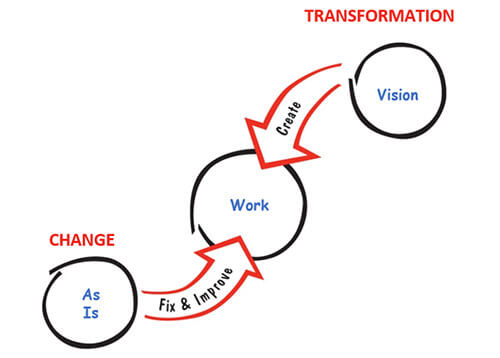
Would you like to start a conversation with other industry leaders to brainstorm a challenge or to just know more on a particular topic?
Engage in online discussions with your Peers
Start NowShared services organizations (or global in-house centers, as they are often referred to now) in India have been in existence for several decades. There are several reasons for India to be found attractive to the numerous companies across various countries. However, the reasons have continuously evolved. And it is this evolution that has made the GICs, and India, successful.
The business case for GICs in India started with high weightage put on cost arbitrage. The focus areas were efficiency, effectiveness, quality, and cost – which became the primary metrics. This was a brilliant starting point as it gave quick results – and the perception about India improved considerably as a services hub for the world. Process efficiency and process re-engineering were considered added value.
This strategy was a function of scale. India proved to be a perfect place as scalability was possible to quite a large extent. For this, talent availability was a key differentiator. The talent market adapted quickly to support and match the talent demand. Over time it was realized that the scale game was limiting. India is capable of providing a lot more than just cost-effective services.
With this recognition started an evolution process. It was no longer about only scale, but also about the type of work. Focus was on more strategic work, more complex work – and on an ecosystem of roles across various functions.
Soon, the shared services organizations had a variety of roles to play. This provided new perspectives within the teams. Over time, the shared ‘service’ organizations started providing solutions beyond mere services. Large data, quantum analysis, analytical reports and research insights brought in more avenues to provide innovative solutions. The quality of the work resulted in talent being utilized for creating centers of excellence and R&D units. Strategic impact became the new game. Metrics started shifting to include value addition, even patents. Questions around sustainability due to cost inflation started to wither away.
Within this evolutions story, the next stage has already begun.

Evolution in the People Strategy
The GICs have begun to play strategic and leadership roles within the larger organization. This is becoming all the more important during the Covid-19 pandemic driven work environment, which seems to have provided great opportunities; a lot of traditional perceptions are getting broken.
A good starting point turned out to be the new staffing model for the GICs themselves. With work-from-home becoming a reality, talent location appears to have become agnostic – probably a continuum from an entirely work-from-office role to a practically work-from-anywhere.
Staff relationship with the company (full time, part time, contract, gig, etc.) is also becoming flexible. The organization design is changing to accommodate these, and some workforce patterns are clearly becoming more fluid in design. To manage these, changes in policy frameworks are being carried out. Production workflows too are being revised to accommodate such large-scale staffing changes.
The leadership of the future will need a new playbook – and the GICs can certainly play a leadership role in this within the enterprise.
The pandemic has also brought up some deep questions about the sustainability of the planet and the humankind’s responsibility. GICs have begun to take an active, leading role within the enterprises – to be more responsible towards the planet, the people, and the society. The GICs are bringing their thought leadership and innovation to lead the organization on all these fronts. Some of the common themes that are followed include:
- Use of renewable energy sources;
- Low emission of greenhouse gases;
- Conservation of natural resources;
- Paper free/plastic free environment;
- Social issues such as inclusion, safety, gender sensitivity, etc. too are being advocated and practiced; and
- above all, widely promoted are the awareness programs, imparted digitally – some inclusive of the entire families.
GICs have also realized that their influence in the development of the youth can make a big social difference.
Evolution in the Business Strategy
On the business side, the GICs are making a huge difference in the way the business is carried out. The concept of “transformation”, as opposed to “change”, is being introduced.

A new line of thought is to change the things being done in place of merely changing the way things are being done. This though has brought about a blue-sky approach to the business. No more are changes carried out only on the advent of tough situations. Changes, or better still transformations, are carried out to preempt situations and gain corporate competitive advantage. In the bargain, GICs are becoming true value partners to the business.
The way GICs are perceived is changing too. The focus is changing from cost and scale to a much more significant value – revenue, customer, innovation and brand.
As most forums discuss how to bounce back to normal, the ones that can think of how to bounce forward to a new normal will be the clear leaders. GICs are bringing in a new vision of true value to the enterprise based on the lessons from the pandemic. A great crisis will not be wasted.

The next stage of setting the standard on industry leadership too can be set by the GICs. These can possibly be by creating mini ecosystems of the following groups:
| Third party service providers | Collaboration rather than competition with this section will likely benefit both sectors. |
| Product companies | They bring a mindset that can certainly leveraged. |
| Start-ups | This community, if helped and leveraged, can potentially be a huge differentiator. |
| Industry bodies | SSF, NASSCOM, including access to CXOs & other successful leaders – past and present. They bring a great value by bringing the GICs together, helping collaboration, and being the voice of the individual entities. They are the glue. |
| Consultants and market research organizations | They bring a very holistic perspective, a valuable outside view. This can be a great sounding board and can help with the roadmap ahead. |
| Academia | Here is probably the greatest return of investment, in the long run. A focus on this can be transformative and has the potential to be majorly disruptive. Talent is the greatest value proposition of the industry – and its development should be of utmost importance. |
| Media | They can help in a significant way to create the brand for GICs in the country. |
| Government | A collaboration and contribution in policy making, etc. can change the entire landscape. |
The Value Proposition
Creating this ecosystem is possibly beyond the direct control of any one GIC and will need a concerted effort at a larger scale. But it is very much possible – with the right vision; with the right attitude; with a broad holistic thinking – this can become a reality. The result will be a great shift in culture.
India’s value proposition will change radically. From ‘low cost’ to ‘great minds’ to a ‘fabric of holistic growth and a great culture’ can be an amazing journey.
ABOUT THE AUTHOR

Kaushik has almost 3 decades of experience in setting up operations, visioning, strategy development, governance, policy making, organization design, risk management, change management, communication management, team building, and leadership development. He is a motivational leader who is extremely passionate about impact on customer, purpose beyond profit, people development. In his corporate ‘avatar’ he has experience in post acquisition integrations, creating location strategy and global operating model, setting up new legal entity structure with a new vision, roadmap, governance across entities, locations and policies ensuring seamless interactions and alignment between entities.
In his free time, Kaushik delves in reading, painting, sketching, photography, graphology, mathematics and teaching.




